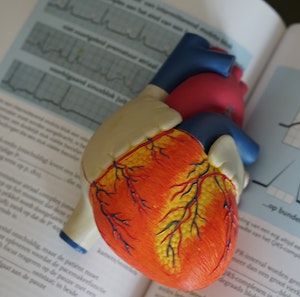Article
No Signficant Benefit to Dalteparin Bridging in Prevention of Arterial Thromboembolism
Author(s):
The rate of major thromboembolism within 90 days was 1.2% for placebo and 1.0% for dalteparin.

A recent study aimed to investigate the uncertainty surrounding patients with atrial fibrillation (AF) or mechanical heart valves who may benefit from bridging with low molecular weight heparin (LMWH) after the procedure.
Investigators noted that there have been previous diverse guidelines to solve this issue. However, the concern remains that the patients may be at a high risk of thrombotic complications cause by a procagulable state of vitamin K antagonists.
The team, led by Michael J. Kovacs, Department of Medicine, Western University, found in patients with AF or mechanical heart valve with warfarin interrupted for a procedure, there was no significant benefit in postoperative dalteparin bridging in prevention of major arterial thromboembolism.
Study
Investigators conducted a randomized, double-blind, placebo-controlled trial to assess the need of postoperative bridging with LMWH dalteparin in patients with AF or prosthetic mechanical valves who required warfarin.
They hypothesized it would lead to fewer bleeding events, as well as a lower rate of thromboembolism, linking it to the thromboembolism with bleeding in their prior pilot study.
The team noted the study included the same patient population as the pilot study, including patients aged ≥18 years with mechanical heart valves, atrial fibrillation, atrial flutter and a CHADS, and risk factor (including transient ischemic attack or stroke, diabetes, age ≥15 years)
Eligible patients were receiving long-term anticoagulation with warfarin as well as required elective non-cardiac surgery or invasive procedure.
Exclusions included active bleeding within 30 days before stopping warfarin, platelet count <100×109/L, and mechanical valve with history of stroke or ischemic attack.
The team discontinued warfarin 5 days before the procedure. Patients were given dalteparin 200 IU/kg subcutaneously 72 and 48 hours before the procedure, and 100 IU/kg 24 hours before the procedure.
Then, warfarin was resumed the evening of the procedure at 2 times the daily dose the first day and then following the INR result.
Outcomes were assessed from the time of randomization to 90 days, with the primary efficacy outcome including major thromboembolism, ischemic stroke, transient ischemic attack.
Secondary efficacy outcomes included individual major thromboembolism outcomes and a composite outcome, including major bleeding.
Results
A total of 1677 patients gave informed consent between February 2007 – March 2016 at 10 sites in Canada and India.
Of this number, 1471 were randomized after the procedure with 821 patients to dalteparin and 650 to placebo.
The mean age of the patients was 69.7 years, with 64.3% men and 79.3% with atrial fibrillation and 20.7% with mechanical valves.
Investigators noted an imbalance in randomization due to a programming error led all patients in the AF and low bleeding risk group being assigned to dalteparin at 2 recruitment sites. However, the team correct the imbalance in the affected group with 80% of patients allocated to placebo and 20% to dalteparin.
Investigators noted the rate of major thromboembolism at 90 days was 1.2%, with 8 events in 650 patients for placebo, while the rate was 1.0%, with 8 events in 820 patients for dalteparin (P = .064, risk difference -0.3%; 95% CI, -1.3 – 0.8).
Further, the team found 13 events (2.0%) of major bleeding in 650 patients for placebo and 11 events (1.3%) in 820 patients for dalteparin (P = .32, risk difference -0.7; 95% CI, -2.0 – 0.7).
Kovacs and colleagues found no significant difference in the outcomes of the subgroups of AF and mechanical heart valve.
They also performed analysis to exclude bias for the imbalance in randomization, finding no statistically significant meaning (P = .67).
Conclusion
After the results, investigators concluded that postoperative bridging with dalteparin did not have a benefit in prevention of major thromboembolism in patients with AF or mechanical heart valves managed with warfarin.
“Although warfarin is being used less frequently in patients with atrial fibrillation, it is still the long-term anticoagulant of choice for patients with mechanical heart valves and in other populations, such as patients receiving dialysis, those with limited supply of direct oral anticoagulants, and in resource constrained settings,” investigators wrote.
They noted the need for further studies in determination of need for bridging before procedures in patients with mechanical heart valves.
The study, “Postoperative low molecular weight heparin bridging treatment for patients at high risk of arterial thromboembolism (PERIOP2): double blind randomised controlled trial,” was published online at The BMJ.





